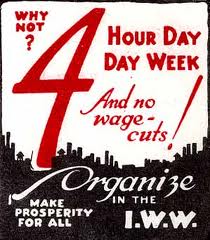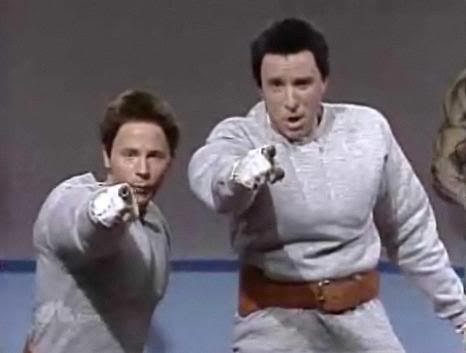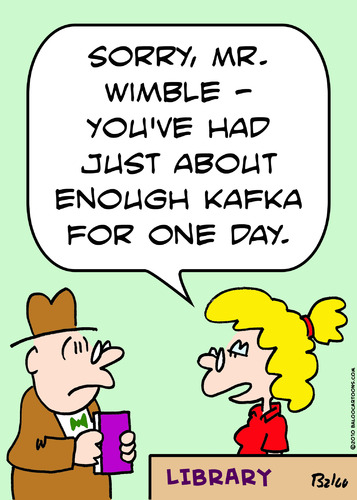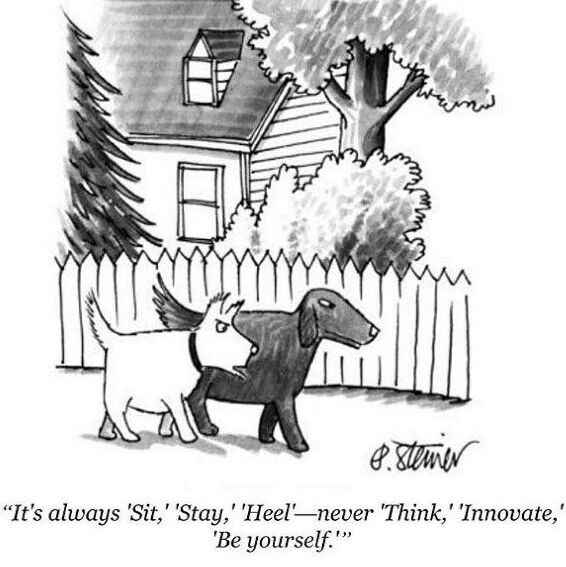Freedom at Work: Set Your Own Salary.*

Caption: Everyman a Plutocrat.
Before any HR types hyperventilate, let me dispense a little oxygen. Most salaries are already “set” for employees. Industries like libraries, or most not-for-profits, already have general guidelines for pay scales. These scales reflect, for the most part, the value society and the organization place on that type of work. As long as one’s salary stays in a “range” there is usually little resentment.
Of course, secrecy and minimal oversight can lead to excesses not only for private CEOs but also for overly handsome paydays in the not-for-profit sector. Once exposed, at least in the latter, taxpayers, board members, and voters can punish the greedy.
But back to Rich Uncle Pennybags, our fantasy spendthrift poster child. “SEMCO” is a for-profit organization that’s on record for allowing employees to set their own salaries.
Hardly a Marxist fantasy come true, Ricardo Semler’s SEMCO’s 3000 employees went at it in a rational manner:
“This was a … complex process, which involved hiring an analyst to benchmark pay levels across multiple positions at 35 different companies. Average pay scales were established for comparable companies, to which SEMCO added 10 percent to help reduce employee turnover. And everyone’s salaries, from that of the security guard at the factory entrance to Mr. Semler’s own, were published for all to see. Peer pressure provided an efficient leveling mechanism. “
Not much of a raised fist and red banners unfurled struggle there. It appears that fairness prevailed. Probably a tiny percentage - even at SEMCO - remains unhappy but the company’s considerable success suggests a vast, content majority. This blissful state is probably more ascribable to the leadership’s openness and fairness then it is to having a say on one’s salary. What do I mean? Salary simply is not the great motivator many believe it is. Most people are satisfied with what they believe is a fair salary. Once achieved, fair pay neither motivates nor demotivates. It is akin to air conditioning. If off on a hot day, all hell breaks lose in the office; if the ACs on, no one notices.
So, when fairness and openness are the goals, employee involvement is salary setting is more educational than it is insurrectionist.
Another way to involve workers in salary discussions is to tie that discussion to an annual review of everyone’s job performance – now that could get interesting! This is said to happen at the “manager-less”** Morning Star company: “In a company with no promotions, people earn more by getting better at their jobs. Employee-elected compensation committees set pay levels after measuring colleagues' performance against their CLOUs and other metrics.”
The CLOU - Colleague Letter of Understanding - is an employee’s stated commitment to the organization including what the employee will do (as capsulated in “Key Performance Indicators” – KIPs) and with whom he will work to achieve his “Commercial Mission.” The process appears heavily HR-inspired, intensely quantified, convoluted and clumsy – even vaguely Soviet - but is seems to work in spite of itself. I suspect there is a tacit understanding: Produce more, help others produce more, and we’ll all get paid more. “Morning Star can pay 15 percent more in salaries and 35 percent more in benefits than the industry average because it's not paying managers and productivity is so high.” (Emphasis added.)
I’m guessing, but workers may be humoring the leadership’s whims for CLOUs, iPod time clocks, and KIPs because they truly thrive in Morning Star’s freedom-at-work environment.
In library-land (my world of work), managers and administrators - who may take home pay triple or more what line staff do - could be particularly vulnerable in an open discussion about salaries. What’s your response when someone asks “What have you done for me lately?" or "What have you done for the organization?” If your role is to back up a fussbudget boss you might have difficulty explaining how you add value to the organization’s bottom line or purpose, why you are still relevant.
I recall in one free-for-all budget session – we’d opened the library’s budget (salaries and operations) to all staff to find resources to pay for new initiatives – one participant asking a pointed, even personal, question: “Why have assistant directors? (people like yours truly). Why not use the AD salary lines for operational needs?” While I kept my job, it was a difficult moment. Later, I tried to explain to myself why I was worth the extra dollars. It wasn’t easy since I saw that the value I placed on my services might be too vague or irrelevant to staff, or, for that matter to administrative colleagues who often saw (and were rewarded) their roles as keepers-of-the-faith more than my role as questioner-of-the-faith!
Self-delusion and preservation on my part? Maybe, but then I could point to successes that previous incumbents in my position had failed to achieve.
That rankling suggestion that ADs were dispensable – regardless of past achievements – may well have portended a time for me to hie for the distant hills. One’s welcome does wear out.
Objectively, that singular experience does suggest how salaries can be kept in line through public discussion. If your value to the organization is up for discussion and you want to double your take-home pay - you’ll need to demonstrate how you bring more to the table.
*Note: This is the third entry on how democratic workplaces behave. More to come. The first installment was about work schedules.
The second was about making salaries public.
** Chris Rufer, the founder of Morning Star explains managing in a flat organization: “Everyone’s a manager here”, …. “We are manager rich. The job of managing includes planning, organizing, directing, staffing and controlling, and everyone at Morning Star is expected to do these things. Everyone is a manager of their own mission. They are managers of the agreements they make with colleagues, they are managers of the resources they need to get the job done, and they are managers who hold their colleagues accountable.” From Gary Hamel’s, "First, Let's Fire All the Managers", December, 2011 Harvard Business Review, p.58.



















































 ”Two chimpanzees will never carry a log together”. Humans will. Why?
”Two chimpanzees will never carry a log together”. Humans will. Why?









 John Lubans - portrait by WSJ
John Lubans - portrait by WSJ